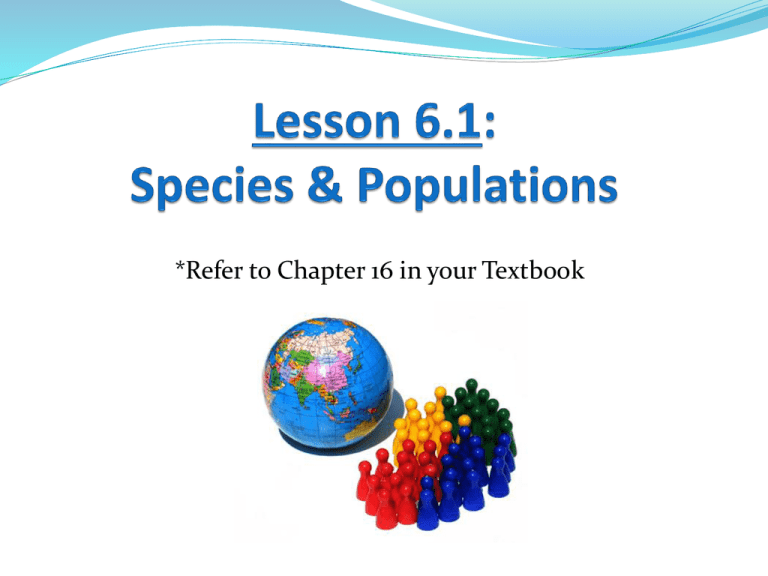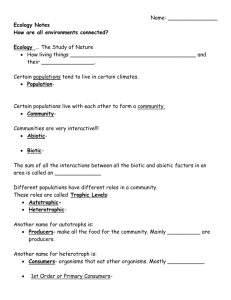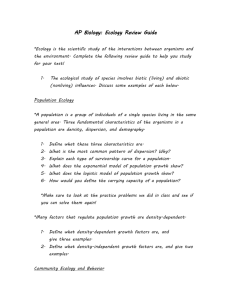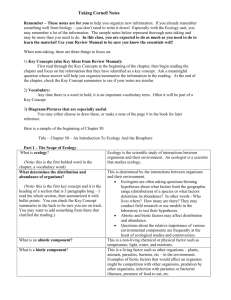Lesson 6.1
advertisement

*Refer to Chapter 16 in your Textbook Learning Goals: 1. List the organizational levels of ecology in order. 2. Identify abiotic and biotic factors that effect ecology. 3. Determine a populations’ growth rate and carrying capacity. What is Ecology? Ecology is the science that studies how organisms relate to each other and their environment. Organizational Levels of Ecology: 1. Biosphere: the entire planet, including the land, ocean, and atmosphere, and all living things = WORLD 2. Biome: a group of ecosystems that share similar climates and organisms = COUNTRY 3. Ecosystem: a group of communities with interacting organisms through which energy is transferred = STATE Organizational Levels of Ecology: 4. Community: a collection of different populations living and interacting within an ecosystem = TOWN 5. Population: a group of individuals (same species!) that live and interact within a community = HOUSE 6. Species: a single organism = INDIVIDUAL Factors that affect Ecology: Biotic Factors: biological influences (living) Ex: Plants & Animals Abiotic Factors: physical influences (non-living) Ex: Temperature, sunlight, soil, water Species (#6): Habitat: includes the area and its factors where an organism lives Can be either specific or broad depending on the organism Niche: an organisms role/job within its habitat (Ex: cleaner fish eat parasites and dead skin off of fish on reefs) Population (#5): Population density refers to the number of individuals per unit area. (Example: A population of ducks in a pond may have a low density, while fish and other animals in the same pond community may have higher densities.) Population (#5): Dispersion refers to how individuals in a population are spaced out across the range of the population—randomly, uniformly, or in clumps. (Ex. Dolphins travel in pods or clumps) Population (#5): A population’s growth rate determines whether the population size increases, decreases, or stays the same. How do we determine growth rate? • Birth rate • Death rate • Immigration (enter) • Emigration (exit) Population (#5): Carrying capacity is the maximum number of individuals of a particular species that a particular environment can support. When (Birth rate + Immigration = Death rate + Emigration) population growth stops and you get your carrying capacity How Scientists Get Population (#5) Info? How do scientists determine the density, dispersion, growth rate, & carrying capacity of a population? By safely sampling or capturing organisms and recording information (2 common examples): 1.Random Sampling Technique 2.Mark & Recapture Technique








